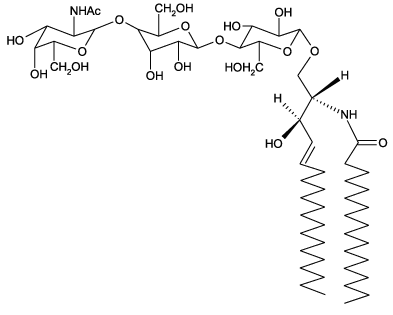Oligosaccharide receptor mimics inhibit Legionella pneumophila attachment to human respiratory epithelial cells.
Richard J Thomas, Tim J Brooks
文献索引:Microb. Pathog. 36(2) , 83-92, (2004)
全文:HTML全文
摘要
Legionnaire's disease is caused by the intracellular pathogen Legionella pneumophila, presenting as an acute pneumonia. Attachment is the key step during infection, often relying on an interaction between host cell oligosaccharides and bacterial adhesins. Inhibition of this interaction by receptor mimics offers possible novel therapeutic treatments. L. pneumophila attachment to the A549 cell line was significantly reduced by treatment with tunicamycin (73.6%) and sodium metaperiodate (63.7%). This indicates the importance of cell surface oligosaccharide chains in adhesion. A number of putative anti-adhesion compounds inhibited attachment to the A549 and U937 cell lines. The most inhibitory compounds were polymeric saccharides, GalNAcbeta1-4Gal, Galbeta1-4GlcNAc and para-nitrophenol. These compounds inhibited adhesion to a range of human respiratory cell lines, including nasal epithelial, bronchial epithelial and alveolar epithelial cell lines and the human monocytic cell line, U937. Some eukaryotic receptors for L. pneumophila were determined to be the glycolipids, asialo-GM1 and asialo-GM2 that contain the inhibitory saccharide moiety, GalNAcbeta1-4Gal. The identified compounds have the potential to be used as novel treatments for Legionnaire's disease.
相关化合物
| 结构式 | 名称/CAS号 | 分子式 | 全部文献 |
|---|---|---|---|
 |
神经节苷酯GM<sub>2</sub>
CAS:35960-33-9 |
C56H104N2O18 |
|
Asialo GM-2 developed on the fatty streak of atherosclerotic...
1995-01-17 [Ann. N. Y. Acad. Sci. 748 , 277-81; discussion 281-2, (1995)] |
|
Catabolism of asialo-GM2 in man and mouse. Specificity of hu...
1999-10-01 [J. Biol. Chem. 274(40) , 28612-8, (1999)] |
|
Optimal conditions to radiolabel (3H or 14C) aminosugar-cont...
1995-06-09 [Biochim. Biophys. Acta 1244(2-3) , 418-22, (1995)] |
|
Soluble fibronectin interaction with cell surface and extrac...
2000-02-01 [Arch. Biochem. Biophys. 374(1) , 93-9, (2000)] |
|
Enzymatic sulfation of gangliotriaosylceramide in human rena...
1995-05-01 [J. Biochem. 117(5) , 987-92, (1995)] |